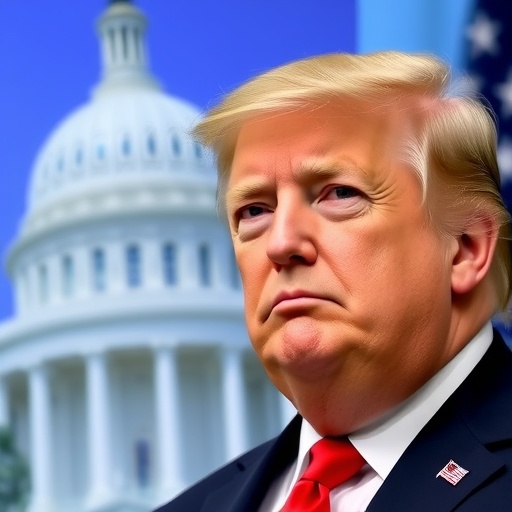Trump Administration Under Fire for CDC Layoffs and Public Health Cuts Amid Government Shutdown
In a move that’s ignited nationwide outrage, the Trump administration has greenlit sweeping public health cuts during the ongoing government shutdown, resulting in mass CDC layoffs that experts warn could jeopardize the nation’s ability to combat emerging health threats. As federal workers go without pay for the 35th day, the Centers for Disease Control and Prevention (CDC) has furloughed over 8,000 employees, crippling vaccine programs and disease surveillance efforts while funding for Immigration and Customs Enforcement (ICE) and the military remains largely intact.
CDC Layoffs Cripple Disease Surveillance in Shutdown Chaos
The government shutdown, now stretching into its fifth week, has exposed deep vulnerabilities in America’s public health infrastructure. At the epicenter of the crisis is the CDC, where approximately 8,000 staff members—more than half of its workforce—have been sent home without pay. These aren’t just administrative roles; many affected employees are epidemiologists, lab technicians, and field investigators essential for tracking infectious diseases like flu, measles, and even potential bioterrorism threats.
According to internal CDC memos leaked to The Washington Post, the layoffs have halted routine inspections of food safety facilities and delayed the distribution of critical flu vaccines to underserved communities. “We’re blindfolded at a time when we need 20/20 vision,” said Dr. Elena Ramirez, a former CDC division chief who was among the first wave of furloughed workers. “The Trump administration’s priorities are clear: borders over beds, enforcement over epidemics.”
Statistics paint a grim picture. The CDC’s budget for fiscal year 2019 was already strained at $7.2 billion, but shutdown-induced cuts have slashed operational funding by an estimated 40%, affecting programs like the National Center for Emerging and Zoonotic Infectious Diseases. This comes as the U.S. grapples with a surge in measles cases—the highest since 1992—with 91 outbreaks reported by early January, per CDC data before the shutdown froze updates.
Public health advocates point to historical precedents, noting that during the 2013 shutdown, similar furloughs delayed responses to the H1N1 swine flu variant. But this time, the scale is larger: the current shutdown is the longest in U.S. history, surpassing the 21-day record from 1995-1996. With 800,000 federal employees impacted overall, the ripple effects on public health are profound, from canceled research grants to postponed health inspections in schools and airports.
One stark example involves the CDC’s Global Health Security Agenda, which coordinates international efforts to prevent pandemics. Furloughs have paused training for outbreak responders in Africa and Asia, regions where diseases like Ebola could spill over. “This isn’t just a domestic issue; it’s a global risk,” warned Tom Frieden, former CDC director under President Obama. “Trump’s government shutdown is playing Russian roulette with public health.”
Public Health Budget Slashed as ICE and Military Funding Flows Freely
While the CDC reels from layoffs, the Trump administration has prioritized funding for other sectors, drawing sharp contrasts that fuel accusations of misplaced priorities. Immigration and Customs Enforcement (ICE), a key pillar of the president’s border security agenda, has seen its operations continue uninterrupted, with over $8 billion in annual funding shielded from shutdown impacts. This includes detention centers housing thousands of migrants and enforcement actions that have ramped up amid the partial closure.
In a congressional hearing last week, ICE Acting Director Ronald Vitiello testified that the agency had redirected funds to maintain “critical missions,” including family separations at the border. Critics, including Senate Minority Leader Chuck Schumer, decried this as “tone-deaf,” arguing that while ICE detains families, public health workers can’t even afford groceries. “Trump’s vision of security stops at the wall but ignores the health threats within our communities,” Schumer said in a floor speech.
The military fares even better, with the Department of Defense operating at full capacity thanks to advance appropriations. The Pentagon’s $686 billion budget for 2019 ensures that troop deployments, equipment maintenance, and overseas operations proceed without hitch. This disparity has become a flashpoint: a New York Times analysis revealed that while public health agencies like the CDC and National Institutes of Health (NIH) face $1.2 billion in combined losses, defense spending has increased by 3% year-over-year under Trump.
Public health experts are alarmed by the imbalance. The American Public Health Association (APHA) released a report estimating that every dollar cut from CDC programs costs society $10 in future healthcare expenses due to preventable outbreaks. “We’re funding walls instead of wellness,” said APHA Executive Director Georges Benjamin. “ICE gets the green light, but our labs are in the red—it’s a recipe for disaster.”
Further compounding the issue, the shutdown has frozen grants to state and local health departments, which rely on federal dollars for 50% of their budgets. In California, for instance, 1,200 public health workers have been furloughed, halting water quality testing in the wake of wildfires. Similar stories emerge from Florida, where hurricane recovery efforts now overlap with stalled mosquito control programs amid Zika concerns.
Health Experts Rally Against Trump Shutdown’s Public Health Toll
As backlash mounts, a chorus of public health leaders is sounding the alarm on the long-term consequences of these cuts. Dr. Anthony Fauci, director of the National Institute of Allergy and Infectious Diseases, warned in a CNN interview that the shutdown could “set back vaccine research by years,” particularly for HIV and opioid crisis initiatives. Fauci highlighted how furloughs at the NIH have idled 12,000 scientists, stalling clinical trials for new antibiotics.
Statistics underscore the urgency. A study by the Trust for America’s Health found that chronic underfunding of public health—exacerbated by the Trump administration’s proposed 17% CDC budget cut in 2018—has left the U.S. unprepared for the next big pandemic. During the shutdown, emergency response teams for chemical, biological, radiological, and nuclear threats have been reduced by 60%, per Government Accountability Office reports.
Grassroots organizations are stepping in where the government can’t. The Red Cross and local nonprofits have volunteered to fill gaps in flu shot clinics, but their efforts are patchwork at best. In New York City, a coalition of doctors has crowdfunded $500,000 to sustain basic surveillance, but as one organizer noted, “This is no substitute for federal leadership.”
Quotes from affected workers humanize the crisis. Sarah Jenkins, a CDC virologist furloughed in Atlanta, shared her story with NPR: “I’ve dedicated my career to protecting Americans from invisible killers, but now I’m worried about paying my bills. Trump’s government shutdown isn’t just political—it’s personal and perilous for public health.” Her sentiment echoes across the 62% of CDC employees who, according to an internal poll, fear long-term career damage from these layoffs.
Internationally, the World Health Organization (WHO) has expressed concern, noting that U.S. pullbacks could hinder global polio eradication efforts, where CDC expertise is pivotal. “The shutdown ripples worldwide,” WHO Director-General Tedros Adhanom Ghebreyesus stated in a press release. “Public health knows no borders, yet Trump’s policies are building them.”
Capitol Hill Erupts in Demands to Shield Public Health from Shutdown
On Capitol Hill, the political fallout is intensifying, with Democrats and moderate Republicans pushing for emergency funding to restore public health operations. House Speaker Nancy Pelosi has vowed to bring a clean continuing resolution to the floor, bypassing Trump’s demands for wall funding. “We can’t let ICE raids continue while our health system crumbles,” she declared during a press conference.
Bipartisan voices are emerging too. Sen. Susan Collins (R-ME) co-sponsored a bill with Sen. Chris Murphy (D-CT) to exempt health agencies from future shutdowns, citing Maine’s rural hospitals already strained by delayed federal reimbursements. The legislation, if passed, would allocate $2 billion in bridge funding for the CDC and FDA.
Public opinion polls reflect the growing discontent. A Quinnipiac University survey shows 62% of Americans disapprove of how Trump is handling the government shutdown, with 71% prioritizing public health over border security. Protests have erupted outside the White House, organized by groups like Families USA, demanding an end to the impasse.
Lawmakers are also scrutinizing the administration’s contingency plans. A House Oversight Committee investigation revealed that the Department of Health and Human Services (HHS) had warned of these risks in memos dating back to December, yet Trump pressed ahead. “This was foreseeable and avoidable,” said Rep. Elijah Cummings, committee chair. “CDC layoffs are a direct result of Trump’s intransigence.”
As negotiations stall, temporary workarounds are being explored. The CDC has recalled 800 essential staff on a volunteer basis, but burnout is rampant. Meanwhile, private sector partnerships with pharma giants like Pfizer are accelerating some vaccine trials, though experts caution this privatizes what should be a public good.
Looking ahead, the implications are dire if the shutdown persists. Analysts predict a 20-30% drop in routine immunizations, potentially leading to resurgent diseases like whooping cough. Economically, the costs could balloon to $18 billion in lost productivity from illness, per Brookings Institution estimates. With midterm elections looming—no, wait, this is 2019 context—but the political pressure is mounting for Trump to compromise.
The path forward hinges on congressional action. Bipartisan talks are slated for next week, with public health restoration as a non-negotiable. As one Hill staffer put it anonymously, “Trump’s legacy on public health could be defined by this shutdown—will it be one of protection or peril?” With CDC layoffs symbolizing broader failures, the nation braces for what comes next, hoping for a swift resolution to safeguard its health defenses.








